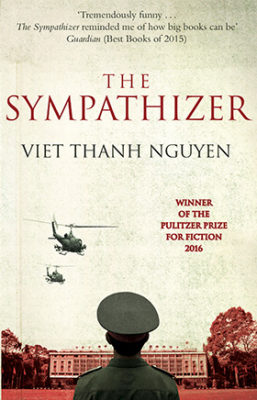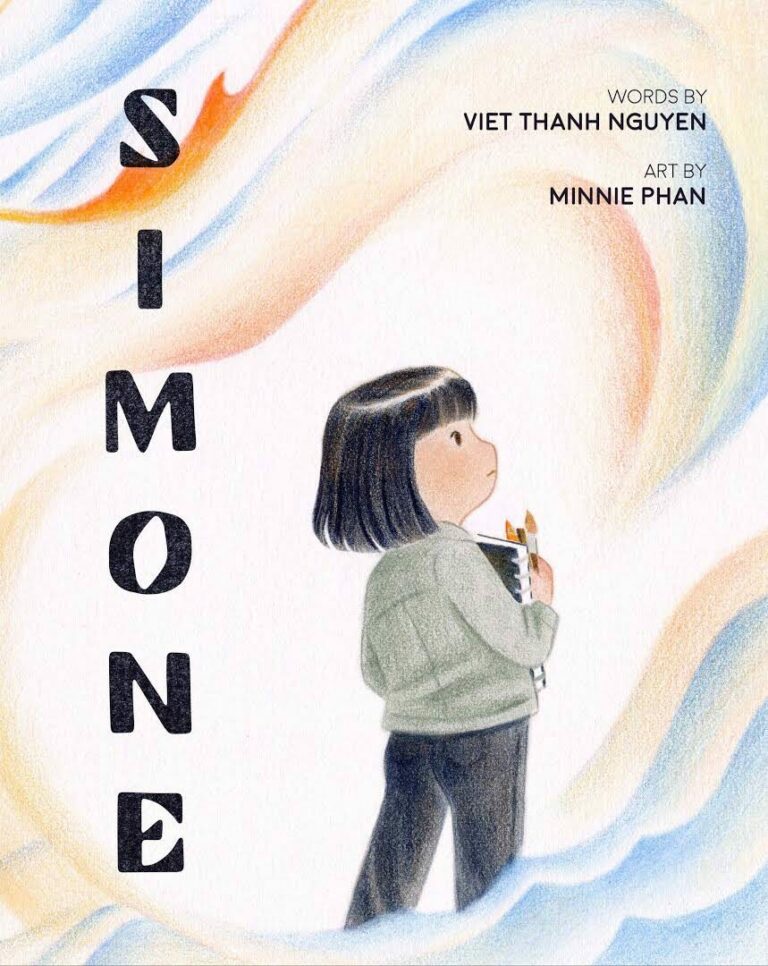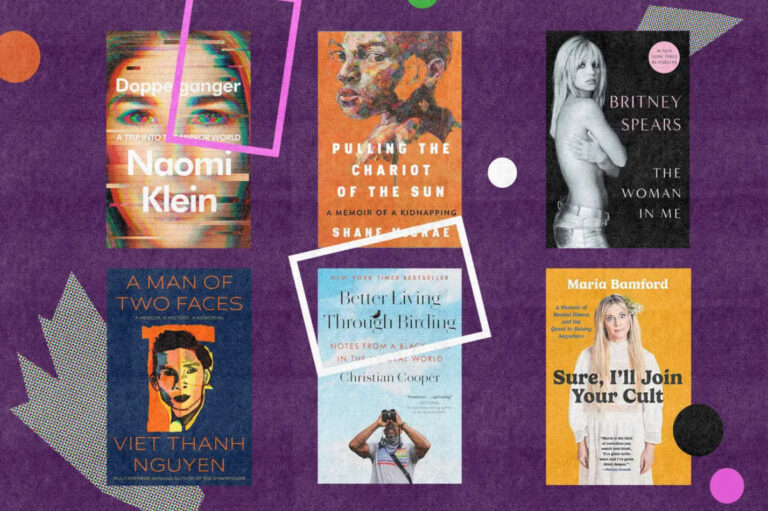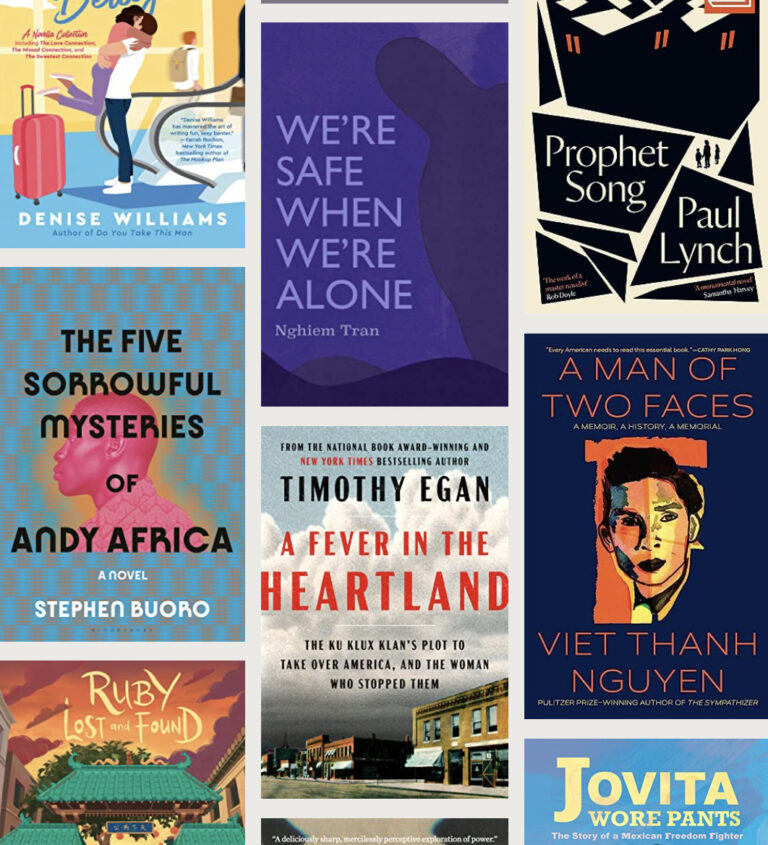Antonella Lettieri reviews Viet Thanh Nguyen’s The Sympathizer. Originally published by H-Amstdy.

A Man of Two Faces
2016 Pulitzer Prize-winner The Sympathizer by Viet Thanh Nguyen has been widely acclaimed for introducing American and Western readers to the other side of the story–or history–by retelling the well-known narrative of the Vietnam War from another perspective, namely that of the Vietnamese in the aftermath of the fall of Saigon on April 30, 1975. In doing so, the novel explores complex problems relating to identity, allegiances, and politics. Moreover, it questions long-held beliefs by probing the issue of representation at its very core.
The narrative is built around a coerced confession: the protagonist–who will remain unnamed for the entire novel–is, in fact, engaged in a session of self-criticism that, as will be revealed only toward the end of the book, has been going on for a year already. The first words entrusted to paper by this elusive voice clearly set the tone for the rest of the novel: “I am a spy, a sleeper, a spook, a man of two faces” (p. 1). It is the reader’s job to slowly piece together, at least in part, the protagonist’s identity, “a Vietnamese army Captain” who, as the back cover blurb aptly summarizes, “is a man of divided loyalties, a half-French, half-Vietnamese communist sleeper agent in America after the end of the Vietnamese war.”
The issue of the protagonist’s identity and split allegiances will resurface time and time again throughout the novel. The “bastard” son of a French priest and a teenage Vietnamese girl, his mixed race sets him painfully apart from the rest of the people who surround him. His education, a degree in American studies from a California college, enamored him with the American way of life and polished his English accent to the point that it is now impeccable. His political allegiance to the communist cause, which he hopes will eventually bring forth social justice, turns him into a spy: a mole always living undercover and never able to expose his true self to anyone, an actor who “[dreams] of trying to pull a mask off [his] face, only to realize that the mask was [his] face” (p. 136). In between multiple identities, the narrator is “able to see any issue from both sides” (p. 1). Whether this actually is an asset, however, is up for discussion: “[a]fter all, a talent is something that you use, not something that uses you. The talent you cannot not use, the talent that possesses you–that is a hazard” (p. 1). And trying to keep up with different sides of himself will ultimately expose the narrator to some serious danger.
In the first pages of the novel, which move quickly, like an action movie, the reader learns that the protagonist is an undercover communist spy who has worked his way up to become the trusted aide to the head of the Special Branch for interrogation of the National Police, a high-ranking general of the South Vietnamese government with strong connections to the CIA. Soon enough, it becomes evident to the Americans and the Vietnamese alike that all hope of defeating the charge of the North Vietnamese army is lost and that there is barely any time left to arrange a hasty evacuation from Saigon before it is too late.
The protagonist, who for a moment toys with the idea of staying behind to reap the fruit of the long-awaited communist revolution, is nevertheless glad when his handler and best friend Man asks him instead to go to the United States with the General on a mission of espionage. The narrator, in fact, is quite excited at the idea of going back to America, although hardly able to admit to it even when pressed by Man. Apart from spying on the General, there is another, unofficial reason for the protagonist to leave Vietnam; he is to convince their other, inseparable friend Bon–a die-hard anticommunist patriot and soldier, who is unaware of Man and the narrator’s secret political allegiance–to leave, too. The two extremes symbolized by Bon (the resistance fighter-cum-assassin) and Man (the revolutionary intellectual) combine explosively within the narrator himself, who simultaneously pines both for the communist revolution and the alluring seductions of Western pleasures. Perhaps even their names (Bon/Man), once combined, hint–in the languages of Vietnam’s colonizers and oppressors–at the good, decent man that the nameless protagonist fancies himself to be, the sum of all opposites, the best from both worlds, “not half of anything, [but] twice of everything” (p. 139).
After a harrowing and tragic getaway from Saigon, the pace of the novel slows down considerably, as the excitement of epochal events soon gives way to the hardship of having to construct a new future under very different conditions. The protagonist accepts a clerical job at his former college and the rest of the Vietnamese community starts the process of shaping new lives for themselves, with the General opening a liquor store first and a Vietnamese restaurant shortly after. The Vietnamese refugees all adapt–or fail to adapt–differently to their new country and a small Vietnamese resistance soon starts to form again around the General, with the unofficial approval and possibly funding of high-ranking US authorities and the CIA, always happy to lend a hand when it comes to an anticommunist counterrevolution.
The narrator, who lives in terror of being eventually identified as the communist mole, is asked to deal with two suspected communist agents, a “crapulent Major” and Sonny, a Vietnamese American journalist. After trying to play for time, the protagonist first plots and witnesses the assassination of the crapulent Major, only to then be asked to murder Sonny himself. These bloody deeds, which will haunt the narrator for the rest of the book in the form of mischievous ghosts, mark the end of his initiation. The General, who is also now keen to put as much distance as possible between the narrator and his eldest daughter, finally agrees to let the protagonist leave as part of a small reconnaissance contingent heading to Thailand soon, for which Bon had already volunteered. This explicitly undermines Man’s orders to stay in America, but the protagonist, who is still reeling from the emotional consequences of his murderous actions, is desperate to join Bon and try to keep him safe in what will almost certainly be a suicide mission.
The reconnaissance mission on the border fails almost immediately, thanks to the intelligence provided by the narrator himself. Some of the men are killed, while others–including Bon and the protagonist–are captured and then imprisoned in a re-education camp in North Vietnam. The arrest, at the end of chapter 18, also marks the end of the confession and the first part of the re-education of the protagonist, who, in his admiration for all things American, has failed for a whole year to produce a satisfactory statement. His unapologetic apologies, his stylistic mannerisms and clichés, and his penchant for quoting Western authors rather than more ideologically correct and homegrown ones take on a political meaning when the narrator proclaims, “[i]f I am to be condemned–if I am already condemned, as I suspect–then I will do no less than explain myself, in a style of my own choosing” (p. 72).
In the final chapters of the novel the reader assists in the unraveling of the narrator’s conscience and consciousness. The second part of the protagonist’s re-education, which is told in a later addendum to the confession itself, represents one of the many examples in the book of the torture foreshadowed in the Nietzschean epigraph “Let us not become gloomy as we hear the word ‘torture’: in this particular case there is plenty to offset and mitigate that word–even something to laugh at.” Indeed, the reality of the horror experienced under torture and hallucinations about what this might mean team up to uncover the joke behind what the protagonist knew and had forgotten. It is finally time for the narrator to recognize that the truth he had already exposed in the American soul applies to himself, too: “[Americans] pretend they are eternally innocent no matter how many times they lose their innocence. The problem is that those who insist on their innocence believe anything they do is just. At least we who believe in our own guilt know what dark things we can do” (p. 190).
The sudden realization that, if nothing is more precious than independence and freedom, then it is also true that independence and freedom are “worth less than nothing” (p. 376), splits the narrator’s identity for good: after having being destroyed and barely put back together during his re-education, he now is only able to address himself in the first-person plural “we.”
The back-and-forth between contrasting identities and political allegiances is mirrored in the story-telling in which, although proceeding mostly chronologically, many incidents seem to push “the Chinese acrobat of time [to bend] impossibly back on itself” (p. 367), when one event recalls to mind another, mostly because of a grotesque resemblance that suddenly starts vibrating in the narrator’s mind. This is particularly evident during a long section halfway through the novel that recounts the shooting of The Hamlet, a fictional movie which is a not wholly veiled hint at Apocalypse Now by Francis Ford Coppola and to which the protagonist contributes as “consultant” on all things Vietnamese. The cinematographic make-believe acts as a catalyzer of memories for the narrator who–while advising on how to make the movie more realistic when it comes to the torturing and the brutalizing of an entire people, his people–is also forced to think back to the torture and the agony he himself inflicted, on his secret comrades nonetheless, while working as an undercover agent. These memories represent a first step towards a heightened self-awareness on the protagonist’s part, but–as the final chapters will prove–his path towards accepting responsibility for his actions will still be long and excruciating.
Maybe even more importantly, the narrator’s foray into Hollywood offers Nguyen an excellent magnifying glass through which to look at the issue of representing minorities in culture and the media, a topic extremely relevant to today’s society. The book abounds with Western characters who seem to have very clear ideas about what Vietnamese and Asians are like and have absolutely no scruples when it comes to administering their pearls of wisdom, both to their fellow Westerners and to the Vietnamese and Asians they meet on their path.
One early example in the book is the Chair of the Department of Oriental Studies [sic in the novel] who, paternalistic and patronizing to the maximum, treats the issue of the protagonist’s split identities and allegiances as a simple homework, an algebraic equation of “yin and yang” (p. 65). Needless to say, getting full marks is but a very small consolation for the narrator. Unbeknownst to the Chair, however, another “spy” hides in his office: Ms. Sofia Mori, possibly one of the most positive characters in the whole novel, has struggled for a very long time to come to terms with her dual identity as a Japanese American and, more importantly, with the Western projections of what such identity must mean for her. Now, however, as she points out, “Ever since I got it straight in my head that I haven’t forgotten a damn thing, that I damn well know my culture, which is American, and my language, which is English, I’ve felt like a spy in that man’s office. On the surface, I’m just plain old Ms. Mori, poor little thing who’s lost her roots, but underneath, I’m Sofia and you better not fuck with me” (p. 76).
Another character who represents this failure to engage with cultual alterity and diversity is Richard Hedd, the author of the fictional essay “Asian Communism and the Oriental Mode of Destruction.” Unlike the Chair, who is only able to differentiate between a quintessential Eastern and Western character, Hedd “[deals] in types”: the “average Viet Cong fighter,” the “Vietnamese radical intellectual,” the “young Vietnamese who are enamored of America” (p. 251). Again of very little consolation is the fact that the protagonist recognizes one side or another of his personality in Hedd’s blunt statements. Therefore, it is in an act of ultimate irony that the narrator and Man later use Hedd’s book as the key to their secret code of communication, turning an attempt to anatomize a people in order to better oppress them into a valuable tool of subversion. Even more importantly, at the end of the novel, this fictional book represents the last hope for the narrator and Man to ever be able to salvage their friendship from the mayhem of a history of which no one can stay on the good side.
However, as anticipated, it is in the making of The Hamlet that the issue of representation is investigated in full. Having joined the production of the film with the idealistic hope to be able to subvert or, at least, influence its discourse on history and his countrymen, the protagonist is soon to understand the depth of his delusion: “[the Auteur’s] arrogance marked something new in the world, for this was the first war where the losers would write history instead of the victors, courtesy of the most efficient propaganda machine ever created” (p. 134). This is because “[t]hey owned the means of production, and therefore the means of representation, and the best that we could ever hope for was to get a word in edgewise before our anonymous deaths” (p. 179).
Although the protagonist’s input to the movie is indeed accepted, the new scenes can hardly be considered an improvement: the addition of three speaking Vietnamese roles, in fact, results in a waterboarding sequence and a shocking gang rape scene. Even more insultingly, none of the actors cast for the speaking roles is Vietnamese, instead having been chosen from the limited number of “Asian [Everymen]” (p. 158) who circulate through all movies and TV shows in which an Asian character is required. Deeply upset at the unfair treatment of his countrymen, the narrator leverages his position as translator and go-between to negotiate a better pay for the Vietnamese extras, possibly alienating the Auteur even more. However upsetting and demeaning, though, the whole experience on set proves to be important for the narrator in order to make better sense of what happened to his country after his comrades’ success: in fact, it is when speaking to the boat people and hearing of a population victimized and terrorized that the protagonist starts to question for the first time whether it was all actually worth it.
The narrator’s attempted interference with the Hollywood machinery proves, in the end, to be a complete failure, pushing the narrator to the brink of a gruesome death. Although the Auteur fails in his (alleged) attempt on the protagonist’s life, his murder of the narrator in an artistic sense ultimately succeeds, the protagonist’s uncredited contribution to the movie “obliterating [him] utterly in a way that [he] was becoming more and more acquainted with” (p. 289). In the very last pages of the book, the narrator admits it was naive to hope for justice in representation: “How dare a man with two minds think he could represent himself much less anyone else, including his own recalcitrant people? They would never, in the end, be representable at all, regardless of what they representatives claimed” (p. 373).
Having failed to influence the portrayal of the Vietnam War in the movie, it is therefore extremely telling that the first time the protagonist watches The Hamlet in its entirety is not in America, but in a movie theatre in Bangkok. Just as in Nguyen’s own experience (recounted in the essay “Our Vietnam War Never Ended” reprinted at the end of the novel) of hearing “the audience cheering and clapping when the Americans killed the Vietnamese” when watching Platoon, the Thai audience, too, cheers and claps at the massacre of the Vietnamese in The Hamlet, who “looked exactly like [the protagonist’s] fellow spectators” (p. 286). Oblivious to this likeness, the Thai public seems to take on fully and unquestioningly the gaze of the Western Auteur.
It is therefore extremely interesting to explore whether, in The Sympathizer, Nguyen himself manages to avoid the trap of complacency to the dominant gaze when writing from the point of view of a minority. The interview with Paul Tran, “Viet Than Nguyen: Anger in the Asian American Novel,” is also reprinted at the end of the novel and sheds the most interesting light on Nguyen’s approach: “It was very important to me that there be no apologies, no translation, no explanations in this novel because these are the signs of writing towards a dominant culture. So instead, I deliberately structured the book with an audience inside, as a confession towards another Vietnamese person. To the degree that there is no translation or explanation, it is not translating or explaining Vietnamese culture to Americans. It is translating American culture or South Vietnamese culture to the Vietnamese. This was a really critical move for me because it allowed me to adopt this satirical and critical approach towards American culture” (appendix, unpaginated).
Turning upside down the usual axis of communication and refusing the habitual gestures of gratefulness and conciliation, Nguyen subverts the tropes of literature about minorities, where cultural differences are broken down and offered to the reader in a predigested format, in order to instead offer a satire about America, for Americans. However, for the author this is not simply an abstract exercise in turning the question of domination via representation on its head. The result, in fact, goes much deeper and, as Nguyen explains in the interview, comes to question the humanity and inhumanity of all the actors involved, whether from a minority or a dominant background. In the novel, this is accomplished so masterfully that the venial sins of some clichés, unfortunate turns of phrase, and macho histrionics here and there–for which it is unclear whether the blame is at least partly with the author or fully with a character with whom, more often than not, it is very hard to sympathize–are easily forgiven, and the final outcome truly makes the reader feel like they have been told a story previously unheard.
Printable Version: http://www.h-net.org/reviews/showpdf.php?id=47775
Citation: Antonella Lettieri. Review of Nguyen, Viet, The Sympathizer: A Novel. H-Amstdy, H-Net Reviews. April, 2017.
URL: http://www.h-net.org/reviews/showrev.php?id=47775
This work is licensed under a Creative Commons Attribution-Noncommercial-No Derivative Works 3.0 United States License.


